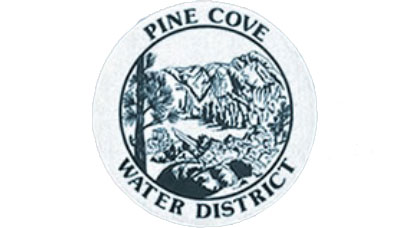Editor’s Note: This is the first in a two-part series about how the Hill’s three water districts have prepared for possible disasters and how that preparation includes cooperation among them to ensure continued water distribution if a major disaster damages local infrastructure. The first will deal with connections among the districts; the second with their individual plans.
Overview
Peter Lent, deputy director of Riverside County’s Office of Emergency Services (OES), has long warned Hill residents to be prepared for a long overdue giant quake (magnitude 8 or more) on the San Andreas Fault network, or a lesser one on the San Jacinto (between 6 or 7M). OES advises local residents to be prepared for no outside assistance for a minimum of 10 days and possibly longer, depending on the severity of the devastation on the valley floor. Not only will residents be cut off and isolated, visitors will be also be stranded with no long-term provisions and avenues of egress blocked.
Will our three water districts be able to supply stranded visitors and isolated residents with sufficient water after one or all sustain major infrastructure damage; and are mutual aid agreements among the agencies sufficient to ensure continued water distribution because of work already completed by the three agencies?
History
According to Pine Cove Water District (PCWD) General Manager Jerry Holldber, the Hill owes a debt of gratitude to Kay Ceniceros, who, when she was 3rd District county supervisor, questioned the Hill’s ability to maintain water distribution after a major quake or other infrastructure-disrupting emergency. “She wanted to know strategies and weaknesses,” said Holldber. Ceniceros secured $25,000 to purchase intertie boosters between districts, allowing water sharing at all elevations and throughout the three districts. “We had the equipment within six months and it’s still used today,” said Holldber.
Mutual aid
“There are also mutual aid agreements [among the districts],” said Holldber. “Pine Cove can pump [up] from IWD [Idyllwild Water District] by generator if needed or gravity flow water down to them. We have common standardized connections for generators in all three districts. We can pump many different areas and zones and isolate storage tanks, if needed.”
Idyllwild Water District General Manager Terry Lyons also discussed the districts’ interconnectedness. “We have a Mutual Aid Water Agreement” with the Fern Valley Water District [FVWD] and PCWD to share water, equipment and personnel in the event of an emergency,” said Lyons. “As a backup we have discussed having “off the Hill” emergency agreements with Yucaipa Water District and Mission Springs Water District [in Desert Hot Springs] for material and equipment such as generators, pumps, etc. … We have an agreement with [the U.S. Forest Service] to allow them to take emergency water by helicopter from Foster Lake. We have an agreement with Idyllwild Fire Protection District [IFPD] to maintain, test and repair the district’s fire hydrants. And we have budgeted funds to develop and construct IWD’s emergency operation command center (EOC).
FVWD General Manager Steve Erler noted a 2008/2009 emergency interconnection to IWD for 26 parcels as part of their Pine Pressure Zone, as well as compatible generator connections among the three districts. He also referenced emergency water transfer connections between FVWD and IWD, installed in the early 1990s.
Lyons noted that the way the districts are connected is elevation based. PCWD, higher in elevation, and IWD are connected, and IWD and FVWD, also higher than IWD, are connected. PCWD and FVWD are not otherwise directly connected.
“Maybe in the fall we could run some training exercises among the districts,” suggested Holldber. “It probably wouldn’t hurt to look at it [mutual plans].” But, Holldber opined, “I think the districts are well-prepared. If an emergency happened, when the chips were down, we’d get it done.”











